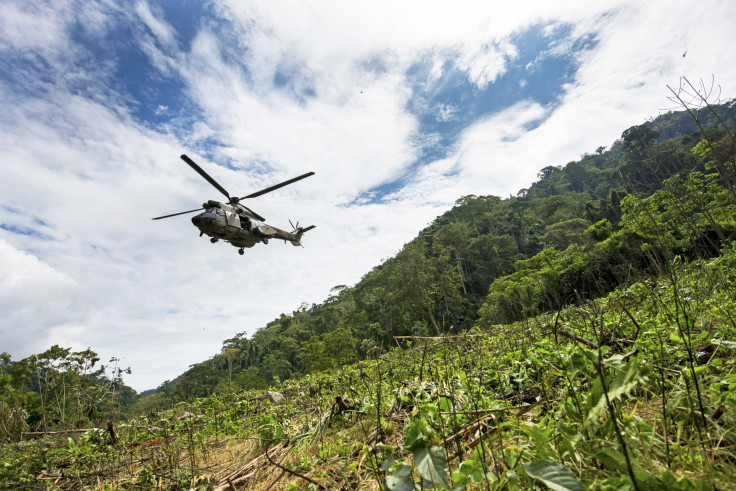Venezuela Plane Takedowns Highlight Latin America's Aerial Drug War

Venezuela is ruffling feathers in Mexico after taking down two planes allegedly of Mexican origin, saying they were trespassing illegally in Venezuelan airspace. But the incident is also providing a glimpse into the drug war playing out in the skies over Latin America. Venezuela’s practice of shooting down planes in its airspace suspected of drug trafficking is relatively new, but similar programs have been active in Brazil and Colombia for years – and it’s spreading to other countries.
Cheaper radar and new overseas markets for cocaine have widened the aerial battleground in the Latin American drug trade, said Adam Isacson, a security expert with the Washington Office on Latin America. “Countries should control their airspace,” he said. “But the downside is that they are going to ignore careful protocol” in shooting down drug-smuggling planes, heightening the chances of civilian deaths.
The U.S. helped fund such programs – called the Air Bridge Denial Program – in Colombia and Peru through the 1990s. But it withdrew its support in Peru in 2001 after officials there mistakenly shot a plane and killed two American missionaries – a case that highlights the potential risks of the spread of shoot-down policies.
Now several other Latin American countries, including Honduras, Ecuador and Bolivia, are forging ahead with their own aerial interdiction programs, using radar bought from China and Israel. Honduras lost U.S. support for its program earlier this year after passing a law that the U.S. criticized as “incompatible with U.S. laws that regulate certain types of security assistance that the U.S. provides to Honduras.” Peru is also looking to revive its program as well, after more than a decade of suspension.
Isacson said that while Colombia has strict safety protocols in place, other countries are not necessarily in the same position. He noted that because most of these shoot-downs occur in unpopulated areas, local governments don’t have police forces operating in the land below where drug-smuggling planes are normally targeted. “There’s no cops on the ground, so it just seems easier for a trigger-happy pilot” to take down the plane, he said.
Meanwhile, it’s not entirely clear how frequently countries have taken down planes or what the casualties have been from the shoot-downs. Venezuelan Defense Minister Vladimir Padrino López has trumpeted the air force’s interception of planes deemed to be illegally flying in Venezuelan airspace, and according to his Twitter account, it has taken down at least 18 planes this year.
Una vez más nuestra Defensa Aeroespacial Integral detecta, intercepta e inmoviliza aeronave que ingresó ilegalmente. pic.twitter.com/MmW6m2698W
- Vladimir Padrino L. (@vladimirpadrino) December 9, 2014Otra aeronave inmovilizada por la FANB al SE de Elorza. Violó espacio aéreo presumiblemente con fines de narcotráfico pic.twitter.com/4sBzAjjNWb
- Vladimir Padrino L. (@vladimirpadrino) December 9, 2014But Venezuela is also trying to combat its reputation as a major hub in a cocaine smuggling route to Honduras – particularly in the state of Apure. Isacson noted that about 20 percent of the cocaine smuggled out of South America travels by air, with all U.S.-bound shipments transiting through Venezuela. “So they’ve got something to prove,” he said.
Brazil and Colombia have remained tight-lipped on how many planes have been downed under their interdiction programs. There's "almost no publicly known examples of [Brazil] having shot down or forced down aircraft,'" Isacson said, while also noting that Colombia had extremely cautious protocols.
Meanwhile, the Venezuelan government has also remained mum on any fatalities or intercepted drugs resulting from the shoot-downs, despite demands for details. Some have suspected that a Colombian civilian pilot who went missing this summer after traveling to Mexico City for a job may have been shot down by Venezuelan forces, but the case has never been resolved. Nor has Mexico ever received any further explanation over a Hawker 25 plane downed over Venezuela’s airspace last year – although one Mexican newspaper reported that it was being used by the infamous Sinaloa cartel.
© Copyright IBTimes 2024. All rights reserved.






















